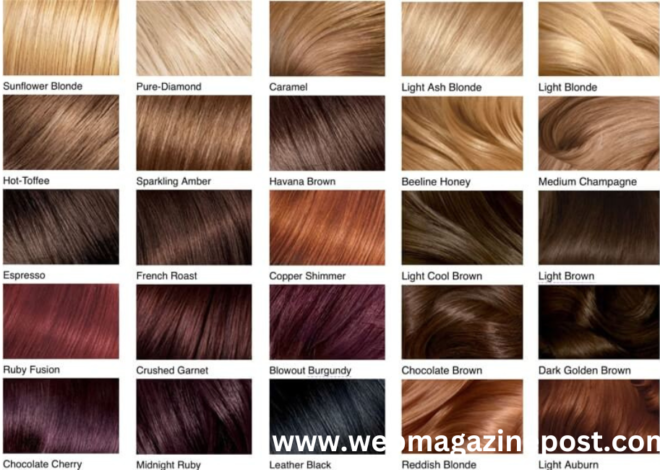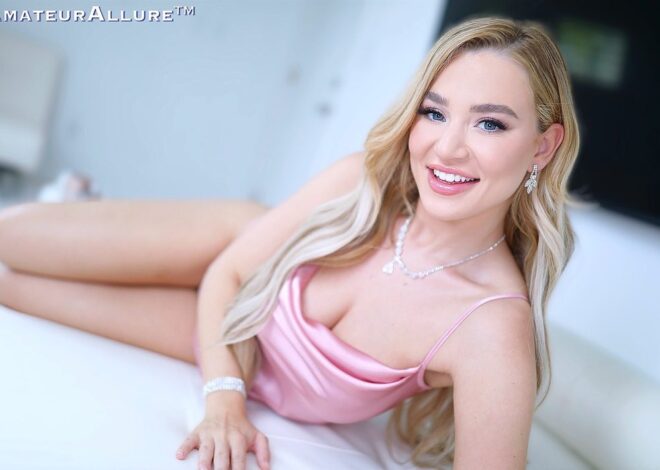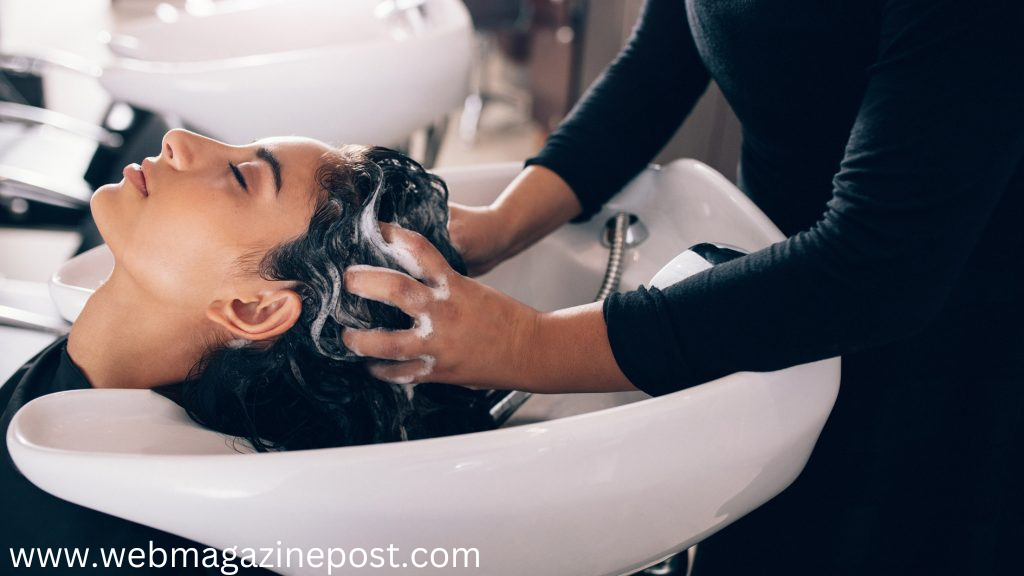
Hair Treatment: 100% Ultimate Guide to Natural Remedies for Hair Growth to Achieve Lustrous Locks
Introduction to Hair Treatment
Our hair often reflects our identity and personality. With the right hair treatment, you can achieve healthy, shiny, and strong hair. But where do you start? This guide covers everything you need to know about hair treatments, from home remedies to professional options.
Understanding Hair Types
Understanding your hair type is essential for choosing the right hair care routine and products. Hair types are generally categorized based on their curl pattern, thickness, and porosity. Here’s a breakdown:
Curl Pattern
Straight (Type 1)
- 1A: Fine, very straight, and often shiny. Lacks volume.
- 1B: Straight with body and a bit of wave, thicker texture.
Wavy (Type 2)
- 2A: Slight wave, fine or medium texture.
- 2B: Wavy with more defined S-shaped curls, prone to frizz.
- 2C: Thick, wavy with well-defined S-shaped curls, often frizzy.
Curly (Type 3)
- 3A: Loose, large curls, well-defined and springy.
- 3B: Tighter, medium-sized curls, dense and voluminous.
- 3C: Tight curls, corkscrew-shaped, very dense.
Coily (Type 4)
- 4A: Soft, well-defined coils, springy.
- 4B: Z-shaped curls, less defined, often very thick.
- 4C: Very tight coils, less definition, prone to shrinkage, very dense.
Hair Thickness
- Fine: Thin strands that can be fragile, prone to oiliness, and often lack volume.
- Medium: Average thickness, holds styles well, balanced in terms of oil and moisture.
- Thick: Coarse, dense strands that can be prone to dryness, but have a lot of volume.
Hair Porosity
- Low Porosity: Hair cuticles are tightly bound, making them resistant to moisture and products, slow to absorb water, and often shiny.
- Medium Porosity: Cuticles are looser, allowing for a balanced absorption and retention of moisture. Usually easy to style and manage.
- High Porosity: Cuticles are very open, allowing moisture in and out easily, and can be prone to frizz and dryness, and often damaged by chemical Hair Treatment.
Tips for Each Hair Type
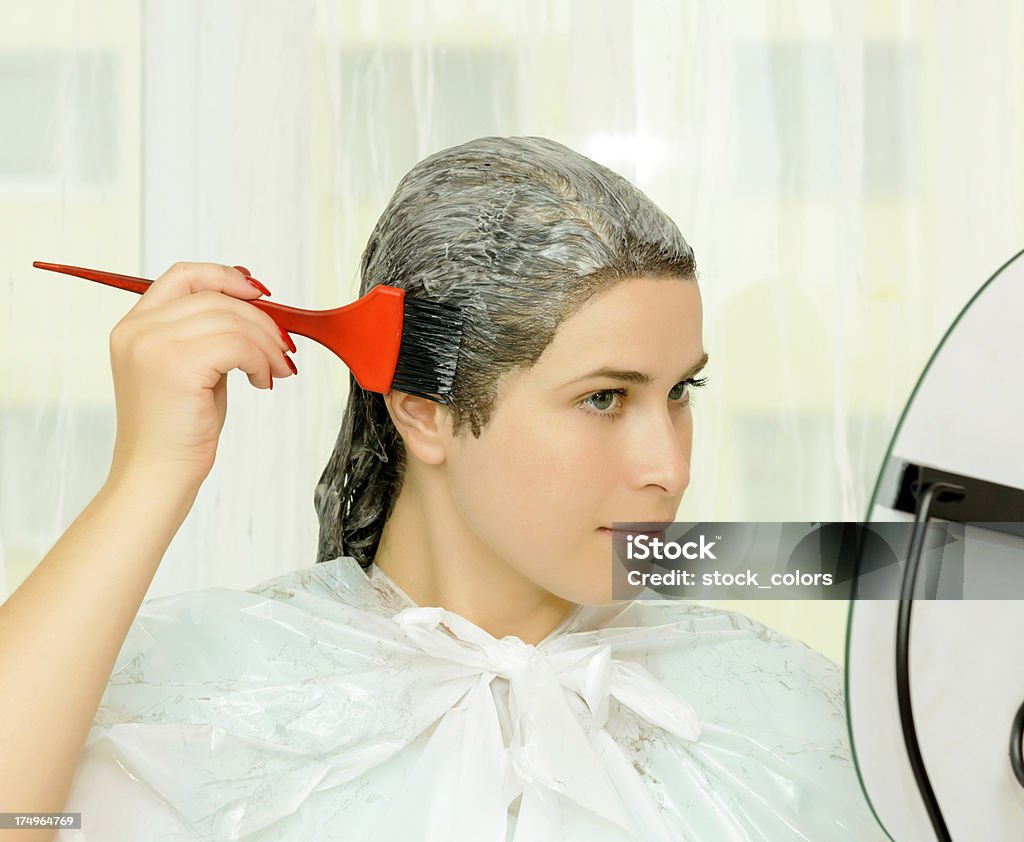
- Straight Hair: Use lightweight products to avoid weighing it down. Regular trims to maintain shape and prevent split ends.
- Wavy Hair: Use anti-frizz products and lightweight styling creams to enhance waves. Avoid heavy products that can weigh down waves.
- Curly Hair: Use moisturizing shampoos and conditioners. Opt for leave-in conditioners and gels to define curls.
- Coily Hair: Use rich, hydrating products like creams and kinds of butter. Avoid sulfates and silicones that can strip moisture. Regular deep conditioning Hair Treatment.
Hair Treatment Basics
Hair treatment basics involve various practices and products aimed at maintaining the health, strength, and appearance of your hair.
Cleansing
- Shampooing: Choose a shampoo that suits your hair type and scalp condition. For oily hair, use a clarifying shampoo; for dry hair, use a moisturizing shampoo.
- Conditioning: Use a conditioner after shampooing to add moisture and detangle. Focus on the ends rather than the scalp to avoid greasiness.
Moisturizing
- Leave-in conditioner: offers continuous moisture and protection throughout the day, enhancing hair health and manageability. Great for dry or curly hair.
- Hair Masks: Deep conditioning Hair Treatment that provide intense moisture and repair.
Heat Protection
- Heat Protectants: Apply before using heat-styling tools like blow dryers, curling irons, or straighteners. They form a protective barrier to prevent damage from high temperatures.
Styling
- Products: Use products suitable for your hair type and desired style, such as gels, mousses, serums, or creams.
- Tools: Choose high-quality styling tools with adjustable heat settings. Avoid excessive use to minimize damage.
Treatments
- Protein Treatments: Strengthen and repair damaged hair. Use if your hair feels weak or has been chemically treated.
- Oil Treatments: Nourish and add shine. Popular oils include coconut, argan, and olive oil. Apply as a pre-wash treatment or as a leave-in for dry ends.
- Scalp Treatments: Keep your scalp healthy with exfoliating scrubs or soothing Hair Treatment to address issues like dandruff or irritation.
Trimming
- Regular Trims: Prevent split ends and keep hair looking healthy.
Protection
- Sun Protection: Use products with UV protection to shield hair from sun damage, especially if you spend a lot of time outdoors.
- Protective Styles: Minimize breakage and promote hair growth by wearing styles that reduce tension and manipulation, such as braids, buns, or twists.
Healthy Habits
- Diet: Maintain a balanced diet rich in vitamins and minerals, especially those beneficial for hair health like biotin, vitamin E, and omega-3 fatty acids.
- Stress Management: Reduce stress through relaxation techniques as it can impact hair health.
Types of Hair Treatments
There are various types of hair treatments designed to address specific hair concerns and improve overall hair health. Here’s a detailed overview of the different types of hair treatments:
Moisturizing Treatments
- Deep Conditioning Treatments: Intense conditioners that penetrate the hair shaft to provide deep hydration and repair. Often left on for 10-30 minutes before rinsing.
- Hair Masks: Thick, creamy Hair Treatment that deliver intense moisture and nourishment. Typically used once a week.
Protein Treatments
- Keratin Treatments: Infuse keratin (a natural protein in hair) to smooth and strengthen hair. Often used to reduce frizz and improve manageability. Can last several weeks to a few months.
- Protein Packs: Designed to temporarily repair and strengthen hair by filling gaps in the hair shaft. Ideal for damaged or over-processed hair. Use once a month or as needed.
Scalp Treatments
- Scalp Exfoliators: Remove dead skin cells, product buildup, and excess oil to promote a healthy scalp.
- Scalp Serums: Contain ingredients that soothe irritation, reduce dandruff, and promote hair growth.
Oil Treatments
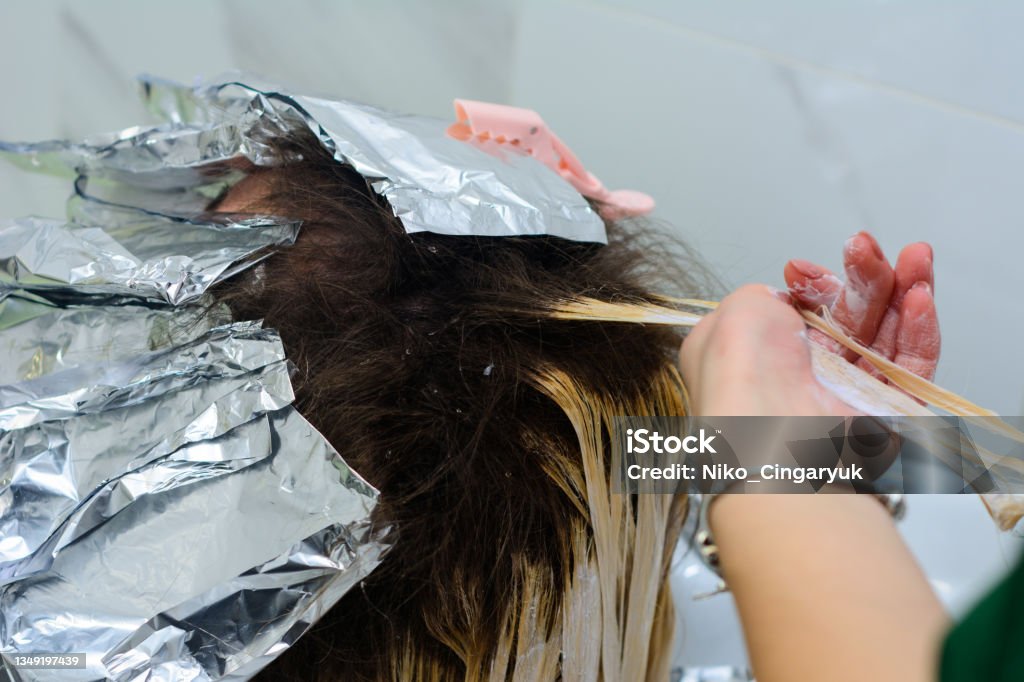
- Hot Oil Treatments: Warm oils like coconut, olive, or argan oil are applied to the hair to deeply moisturize and add shine. Often used as a pre-shampoo Hair Treatment.
- Overnight Oil Treatments: Oils are applied to the hair and left overnight for maximum absorption and hydration.
Color Treatments
- Color-Enhancing Treatments: Deposit color onto the hair to refresh or change hair color. Includes semi-permanent dyes, glosses, and color-depositing conditioners.
- Color Protecting Treatments: Help maintain and extend the life of hair color. Includes shampoos, conditioners, and leave-in Hair Treatment designed for colored hair.
Bond-Building Treatments
- Bond Builders: Products like Olaplex rebuild the disulfide bonds in hair, which can be broken by chemical Hair Treatment and heat styling. Ideal for severely damaged hair.
Smoothing Treatments
- Brazilian Blowout: A Hair Treatment that smooths and straightens hair, reducing frizz and improving shine. Results last several weeks to months.
- Chemical Relaxers: Permanently straighten curly or wavy hair. Typically performed every few months as new hair grows in.
Volumizing Treatments
- Volumizing Sprays and Mousses: Lightweight products that add body and lift to fine or limp hair. Applied to damp hair before styling.
- Root Lifting Treatments: Target the roots to create lift and volume.
Heat Protection Treatments
- Heat Protectants: Sprays, creams, or serums that shield hair from damage caused by heat-styling tools. Apply before using blow dryers, curling irons, or straighteners.
Leave-In Treatments
- Leave-In Conditioners: Lightweight conditioners that provide ongoing moisture, detangling, and protection.
- Serums and Oils: Provide shine, reduce frizz, and protect against environmental damage. Applied to dry or damp hair.
Detoxifying Treatments
- Clarifying Shampoos: Remove product buildup, excess oil, and impurities from the hair and scalp.
- Hair Detox Masks: Deep cleanse the hair and scalp to remove toxins and buildup.
Growth-Enhancing Treatments
- Hair Growth Serums: Contain ingredients that stimulate hair follicles and promote growth. Applied directly to the scalp.
- Supplements: Nutritional supplements that support hair growth from within, often containing biotin, vitamins, and minerals.
Home Remedies for Hair Care
Home remedies for Hair Treatment can be effective and are often made with natural ingredients that are gentle on the hair. Here are some popular home remedies for various hair concerns:
For Dry and Damaged Hair
- Coconut Oil Treatment:
- Warm a few tablespoons of coconut oil.
- Apply to your hair from roots to ends.
- Rinse thoroughly and shampoo as usual.
- Avocado Mask:
- Mash one ripe avocado.
- Mix with one egg yolk and a tablespoon of olive oil.
- Rinse and shampoo.
For Hair Growth
- Onion Juice:
- Extract juice from one onion.
- Apply to the scalp and leave for 15-20 minutes.
- Rinse with a mild shampoo to remove the smell.
- Aloe Vera:
- Apply directly to the scalp and hair.
- Leave for 30 minutes before rinsing.
For Dandruff and Scalp Issues
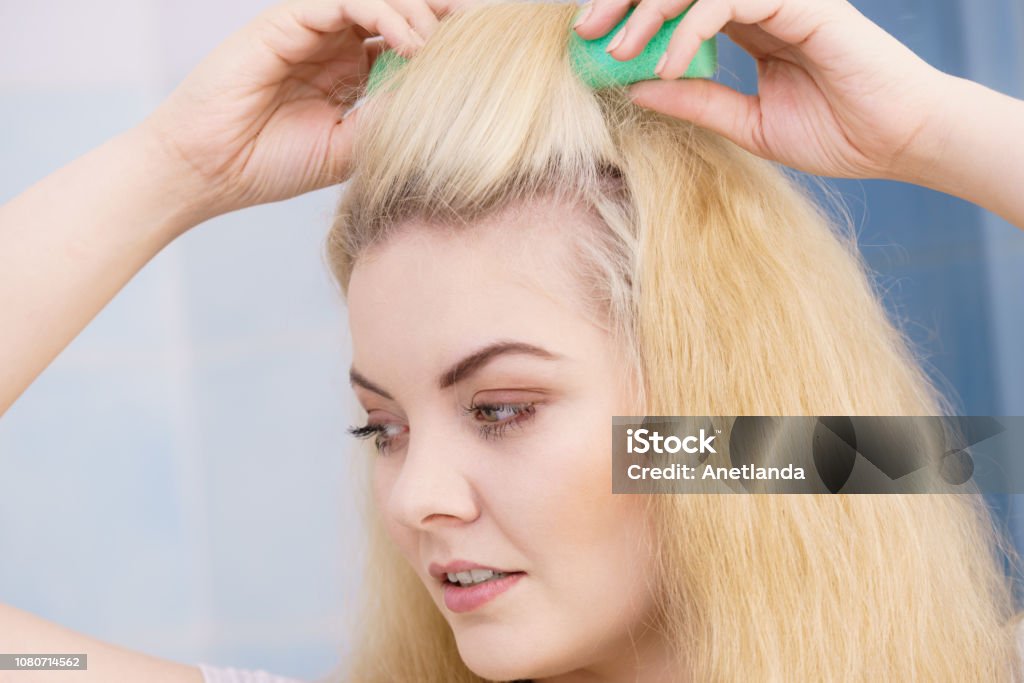
- Apple Cider Vinegar Rinse:
- Apply to scalp and hair after shampooing.
- Tea Tree Oil:
- Massage into the scalp and rinse.
For Frizzy Hair
- Banana and Honey Mask:
- Mash one ripe banana.
- Mix with two tablespoons of honey.
- Rinse and shampoo.
- Yogurt and Honey:
- Apply to hair and leave for 30 minutes.
- Rinse and shampoo.
For Oily Hair
- Lemon Rinse:
- Mix the juice of two lemons with two cups of water.
- Baking Soda:
- Mix one tablespoon of baking soda with water to form a paste.
- Apply to damp hair and scalp.
- Leave for a few minutes before rinsing.
For Split Ends
- Egg and Olive Oil Mask:
- Apply to the ends of your hair.
- Leave for 20-30 minutes before rinsing and shampooing.
- Papaya Mask:
- Blend half a ripe papaya with half a cup of plain yogurt.
- Apply to hair and leave for 30 minutes.
- Rinse and shampoo.
For Shiny Hair
- Beer Rinse:
- Use flat beer as a final rinse after shampooing.
- Apple Cider Vinegar:
- Use as a final rinse after shampooing.
Tips for Home Remedies
- Consistency: Use remedies regularly for the best results.
- Natural Ingredients: Opt for organic and natural ingredients to avoid harmful chemicals.
Professional Hair Treatments
Professional hair treatments are specialized procedures performed in salons to address specific hair concerns and improve the overall health and appearance of hair. Here are some popular professional hair treatments:
Keratin Treatment
- Description: Also known as a Brazilian Blowout, this Hair Treatment smooths and straightens hair by infusing it with keratin protein.
- Duration: Last 3-5 months.
Hair Coloring
- Description: Professional coloring services include permanent, semi-permanent, and temporary hair dyes, highlights, lowlights, balayage, and ombre techniques.
- Benefits: Enhances or changes hair color, covers gray hair, adds dimension and depth.
- Maintenance: Regular touch-ups every 4-8 weeks, depending on the technique.
Balayage
- Description: A hand-painted highlighting technique that creates a natural, sun-kissed look.
- Benefits: Low-maintenance, natural-looking highlights that grow out gracefully.
- Duration: Can last several months with minimal maintenance.
Olaplex Treatment
- Description: A bond-building Hair Treatment that repairs broken disulfide bonds in the hair caused by chemical, thermal, and mechanical damage.
- Benefits: Strengthens and restores damaged hair, reducing breakage.
- Usage: This can be used as a standalone Hair Treatment or added to coloring services.
Scalp Treatments
- Description: Professional scalp treatments address issues like dandruff, dryness, and excessive oil production. They often include exfoliation, deep cleansing, and moisturizing.
- Benefits: Promotes a healthy scalp, which is essential for healthy hair growth.
- Frequency: Recommended every 4-6 weeks.
Deep Conditioning Treatments
- Description: Intensive conditioning Hair Treatment that penetrate the hair shaft to provide deep hydration and repair.
- Benefits: Restores moisture, repairs damage, and improves the overall health of hair.
- Usage: This can be a standalone service or added to other treatments.
Hair Botox
- Description: A deep conditioning treatment that fills in damaged areas of the hair with proteins, vitamins, and amino acids.
- Benefits: Smooths frizz, adds shine and makes hair appear fuller and healthier.
- Duration: Last 2-4 months.
Japanese Hair Straightening
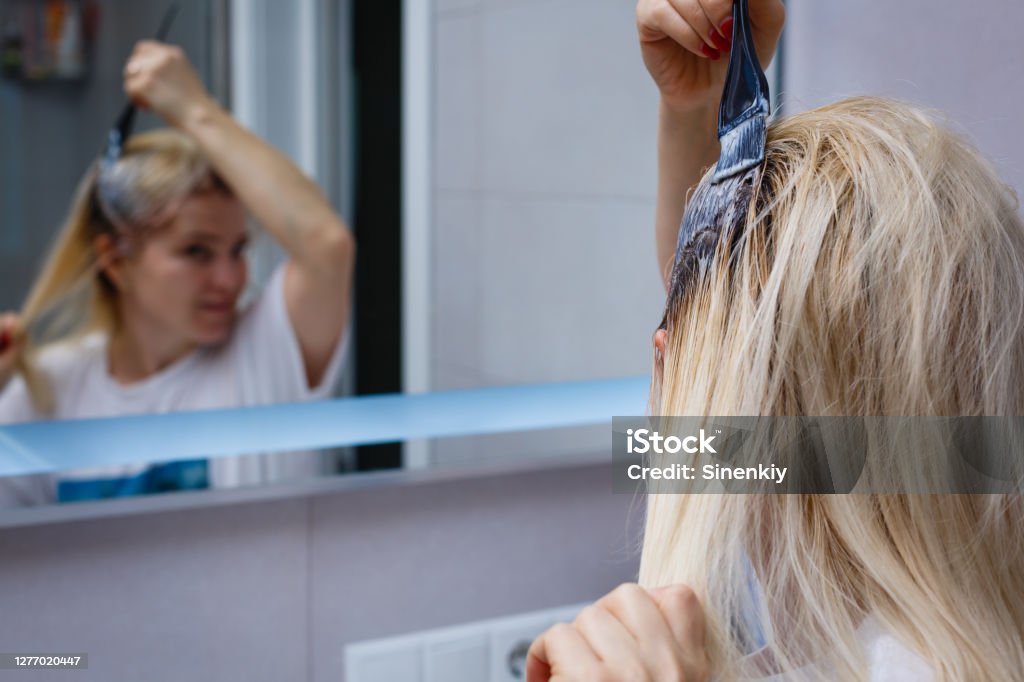
- Description: A permanent straightening treatment that breaks and reshapes the hair’s bonds to create straight, sleek hair.
- Benefits: Completely straightens curly or wavy hair.
- Duration: Permanent, but new growth will need touch-ups.
Hot Oil Treatment
- Description: A treatment that involves applying heated oil to the hair and scalp to deeply condition and nourish.
- Benefits: Adds moisture, reduces frizz, and improves hair elasticity.
- Frequency: This can be done monthly or as needed.
Thinning Hair Treatments
- Description: Treatments that target hair thinning and loss, often using specialized products or laser therapy.
- Benefits: Stimulates hair growth, strengthens existing hair and prevents further loss.
- Frequency: Depends on the specific Hair Treatment, often requiring multiple sessions.
Extensions and Weaves
- Description: Adding hair extensions or weaves to enhance length, volume, or color.
- Benefits: Instant length and volume, versatility in styling.
- Maintenance: Requires regular upkeep, typically every 6-8 weeks.
Gloss Treatment
- Description: A semi-permanent Hair Treatment that adds shine and enhances hair color.
- Benefits: Revives dull hair, adds a healthy glow and can tone color.
- Duration: Lasts 4-6 weeks.
Hair Treatments for Specific Problems
Addressing specific hair problems often requires targeted Hair Treatment. Here’s a guide to various hair treatments designed to tackle common hair issues:
Dry and Damaged Hair
- Deep Conditioning Treatments:
- Use products rich in moisturizing ingredients like shea butter, argan oil, and glycerin.
- Professional treatments such as deep conditioning masks and hot oil treatments.
- Hair Masks:
- Apply once a week. Look for masks with proteins and natural oils.
- Leave-In Conditioners:
- Use daily to provide ongoing moisture and protection.
Frizzy Hair
- Keratin Treatments:
- Smooth and control frizz by infusing hair with keratin.
- Professional treatment lasts several months.
- Silicone-Based Serums:
- Apply to damp hair to seal the cuticle and reduce frizz.
- Anti-Frizz Sprays and Creams:
- Use daily to maintain smoothness.
Hair Loss and Thinning Hair
- Minoxidil (Rogaine):
- FDA-approved topical treatment that stimulates hair growth.
- Low-Level Laser Therapy (LT):
- Stimulates hair follicles using laser light. Requires regular sessions.
- Hair Growth Serums:
- Contain ingredients like biotin, caffeine, and peptides to promote growth.
- Nutritional Supplements:
- Ensure a diet rich in vitamins and minerals essential for hair growth, such as biotin, vitamin D, and iron.
Dandruff and Scalp Issues
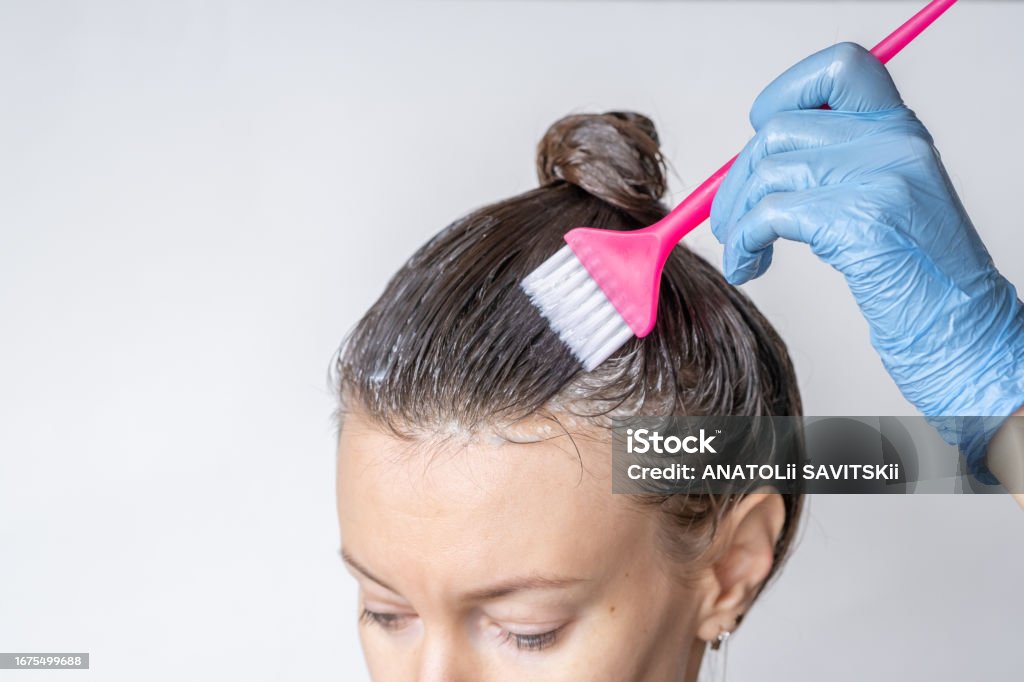
- Medicated Shampoos:
- Contains active ingredients like zinc pyrithione, ketoconazole, or salicylic acid to combat dandruff.
- Tea Tree Oil Treatments:
- Natural antifungal properties help reduce dandruff. Can be added to regular shampoo.
- Scalp Exfoliators:
- Remove buildup and dead skin cells to promote a healthy scalp.
Oily Hair
- Clarifying Shampoos:
- Remove excess oil and buildup. Use once a week.
- Dry Shampoos:
- Absorb excess oil between washes.
- Scalp Treatments:
- Balance oil production with treatments containing ingredients like clay or witch hazel.
Split Ends
- Regular Trimming:
- Every 6-8 weeks remove split ends and prevent further splitting.
- Leave-In Treatments:
- Products containing keratin or silk proteins to temporarily bind split ends.
- Deep Conditioning:
- Use treatments to strengthen and moisturize hair, reducing the occurrence of split ends.
Color-Treated Hair
- Color-Safe Shampoos and Conditioners:
- Formulated to preserve color and add moisture.
- Gloss Treatments:
- Refresh and add shine to color-treated hair.
Heat-Damaged Hair
- Protein Treatments:
- Rebuild hair strength by replenishing lost proteins.
- Heat Protectants:
- Apply before using heat-styling tools to prevent further damage.
- Hydrating Masks:
- Restore moisture and repair damage.
Limp and Fine Hair
- Root Lifting Sprays:
- Apply at the roots to add lift and volume.
- Mousse:
- Use a volumizing mousse to add body and texture.
Curly and Coily Hair
- Curl-Enhancing Products:
- Use creams, gels, and mousses designed to define and hold curls.
- Deep Conditioning Treatments:
- Hydrate and maintain the elasticity of curly hair.
- Protective Styles:
- Reduce breakage and maintain moisture by wearing styles like braids, twists, or buns.
Hair Care Tips for Different Seasons
Hair care needs can vary significantly with the changing seasons.
Spring Hair Care Tips
Deep Cleanse:
- Use a clarifying shampoo once a month to remove buildup from heavy winter products.
Hydrate:
- Continue using moisturizing shampoos and conditioners to replenish moisture lost during winter.
Protect from Humidity:
- Use anti-frizz serums or creams to manage increased humidity.
UV Protection:
- Start using UV protection sprays to shield hair from increasing sun exposure.
Summer Hair Care Tips
Hydrate and Condition:
- Use deep conditioning treatments weekly to combat dryness from sun exposure.
UV Protection:
- Always use hair products with UV protection to prevent color fading and damage.
Avoid Heat Styling:
- Embrace natural hairstyles to minimize additional heat damage.
Protect from Chlorine and Salt Water:
- Wet your hair before swimming to reduce absorption of chlorine or salt.
- Use a protective leave-in conditioner before and after swimming.
Stay Cool:
- Keep your scalp cool and clean to avoid excess oil production. Regularly wash hair to remove sweat and dirt.
Fall Hair Care Tips
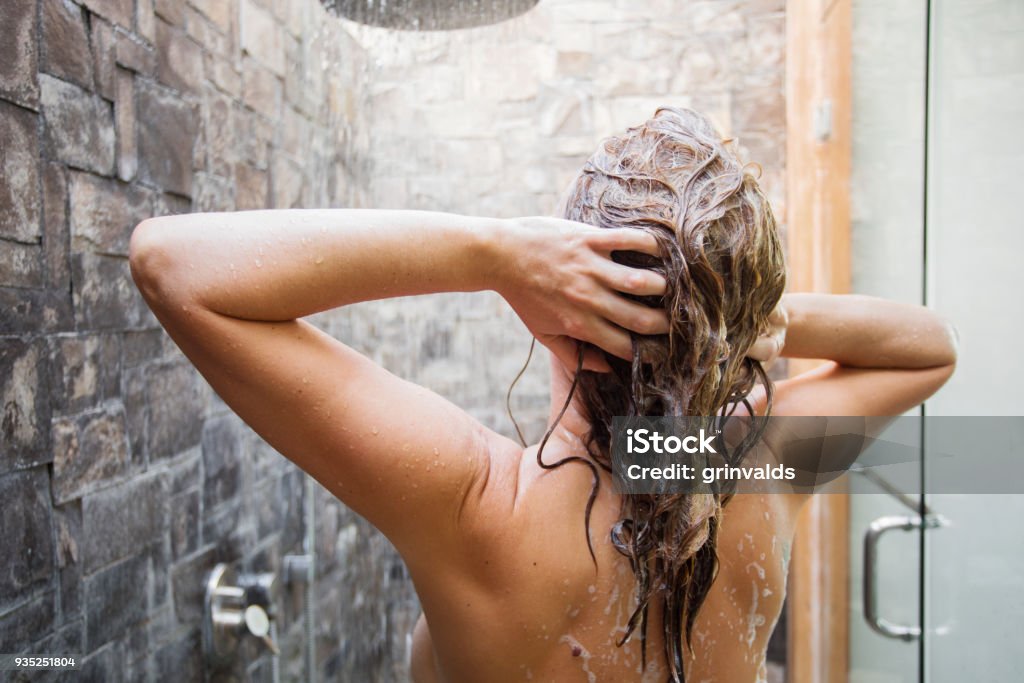
Repair Summer Damage:
- Use protein treatments to strengthen and repair hair damaged by summer activities.
Moisturize:
- Switch to heavier conditioners and hydrating masks to prepare for the drier air of fall.
Scalp Care:
- Exfoliate your scalp to remove buildup and promote healthy hair growth.
Reduce Frizz:
- Use anti-frizz products as humidity levels can fluctuate during fall.
Trim Regularly:
- Continue getting trims to maintain healthy ends and remove any damage.
Winter Hair Care Tips
Moisturize Intensively:
- Use rich, moisturizing shampoos and conditioners to combat the dryness caused by indoor heating and cold weather.
- Apply hair oils or serums to lock in moisture.
Protect from Cold:
- Wear hats or scarves to protect hair from cold winds. Use silk or satin linings to reduce friction and breakage.
Avoid Hot Water:
- Wash your hair with lukewarm water to prevent stripping natural oils.
Reduce Static:
- Use leave-in conditioners and anti-static sprays to combat static electricity.
Deep Conditioning:
- Use deep conditioning treatments more frequently, such as twice a week, to maintain hydration.
General Hair Care Tips for All Seasons
- Balanced Diet:
- Maintain a diet rich in vitamins and minerals to support healthy hair growth.
- Hydration:
- Drink plenty of water to keep your hair hydrated from within.
- Regular Trims:
- Trim your hair every 6-8 weeks to prevent split ends and promote healthy growth.
- Avoid Over-Washing:
- Wash your hair 2-3 times a week to avoid stripping it of natural oils.
- Gentle Handling:
- Be gentle when brushing and styling your hair to prevent breakage.
Choosing the Right Hair Treatment
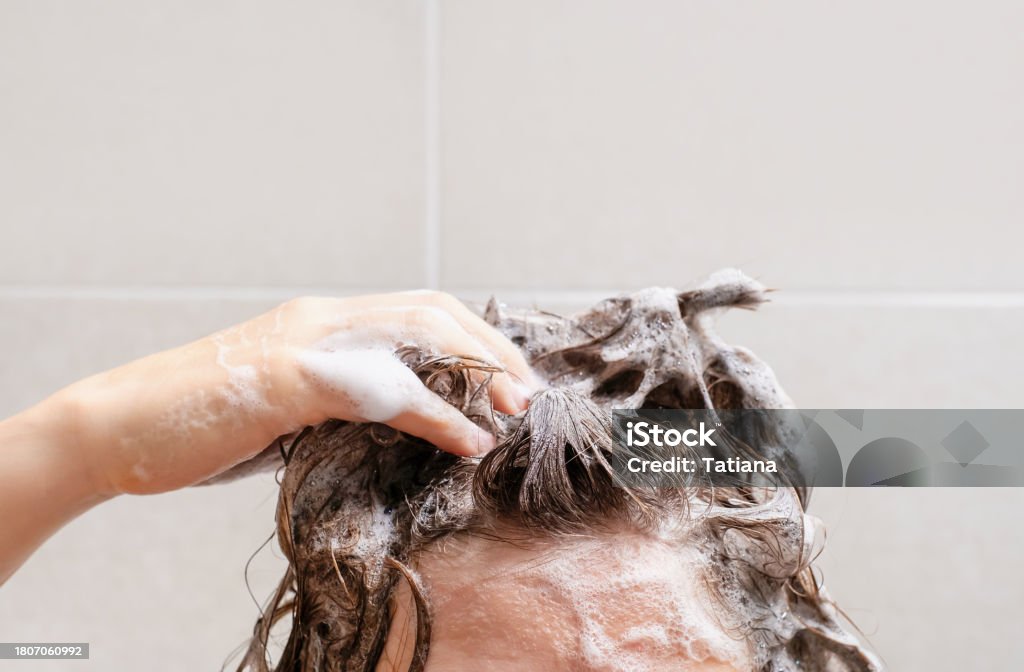
Choosing the right hair treatment depends on understanding your hair type, specific concerns, and desired outcomes. Here are some steps to help you select the most appropriate hair treatment:
Identify Your Hair Type
- Straight Hair: Tends to get oily and lacks volume.
- Wavy Hair: Prone to frizz and may lack definition.
- Curly Hair: Needs moisture and definition, prone to dryness.
- Coily Hair: Requires intense moisture and care to prevent breakage.
Determine Your Hair Concerns
- Dry and Damaged Hair: Look for deep conditioning and moisturizing treatments.
- Frizzy Hair: Consider anti-frizz treatments like keratin or smoothing serums.
- Hair Loss or Thinning: Opt for treatments that promote growth and strengthen hair.
- Dandruff or Scalp Issues: Choose scalp treatments and medicated shampoos.
- Oily Hair: Use clarifying treatments and products that control oil.
- Split Ends: Regular trims and split-end treatments.
- Color-Treated Hair: Use color-safe treatments and conditioners.
Select the Appropriate Treatment
For Dry and Damaged Hair
- Deep Conditioning Treatments: Look for products with ingredients like argan oil, shea butter, and glycerin.
- Hot Oil Treatments: Use natural oils like coconut, olive, or almond oil to restore moisture.
- Hair Masks: Use weekly to hydrate and repair.
For Frizzy Hair
- Keratin Treatment: Smooths hair and reduces frizz for several months.
- Anti-Frizz Serums: Apply to damp hair to manage frizz daily.
- Leave-In Conditioners: Provide ongoing moisture and control frizz.
For Hair Loss or Thinning
- Minoxidil: FDA-approved topical treatment for hair growth.
- Hair Growth Serums: Contain ingredients like biotin, caffeine, and peptides.
- Low-Level Laser Therapy (LLLT): Stimulates hair follicles to promote growth.
For Dandruff or Scalp Issues
- Medicated Shampoos: Look for active ingredients like zinc pyrithione, ketoconazole, or salicylic acid.
- Scalp Exfoliators: Remove buildup and dead skin cells.
- Tea Tree Oil: Natural antifungal properties help reduce dandruff.
For Oily Hair
- Clarifying Shampoos: Use once a week to remove excess oil and buildup.
- Dry Shampoos: Absorb oil between washes.
- Balancing Shampoos: Regulate oil production without stripping moisture.
For Split Ends
- Regular Trims: Every 6-8 weeks to prevent and remove split ends.
- Split End Serums: Temporarily bind split ends together.
- Deep Conditioning: Strengthen and moisturize to reduce split ends.
For Color-Treated Hair
- Color-Safe Shampoos and Conditioners: Preserve color and add moisture.
- Gloss Treatments: Refresh and add shine to colored hair.
- UV Protection Sprays: Prevent color fading from sun exposure.
Consult a Professional
- Hair Stylist: A professional stylist can provide personalized recommendations based on your hair type and concerns.
- Trichology’s: A specialist in hair and scalp health can offer treatments for more severe issues like hair loss or scalp conditions.
Follow Product Instructions
- Read Labels: Ensure you’re using the product correctly for the best results.
- Patch Test: Always do a patch test before trying a new treatment to avoid allergic reactions.
Maintain a Healthy Hair Routine
- Balanced Diet: Ensure you’re getting enough vitamins and minerals for hair health.
- Hydration: Drink plenty of water to keep hair hydrated from within.
- Gentle Handling: Avoid over-washing, harsh brushing, and excessive heat styling.
The Future of Hair Treatments
The future of hair treatments is likely to be shaped by advancements in technology, science, and a growing focus on sustainability and personalization. Here are some trends and innovations that may define the future of hair care:
Advanced Hair Growth Treatments
- Gene Therapy: Research is ongoing into using gene therapy to address hair loss at a genetic level. This could potentially offer a permanent solution to hair thinning and balding.
- Stem Cell Therapy: Stem cell research is showing promise in regenerating hair follicles and promoting new hair growth. Clinical trials are underway to test the efficacy and safety of these treatments.
- Nanotechnology: Nanoparticles can deliver active ingredients more effectively to the hair follicles, enhancing the effectiveness of hair growth treatments.
Personalized Hair Care
- DNA Analysis: Companies are developing hair care products based on individual genetic profiles, providing customized treatments that address specific hair concerns.
- AI and Machine Learning: AI can analyze hair type, scalp condition, and environmental factors to recommend personalized hair care routines and products.
Sustainable and Eco-Friendly Products
- Natural and Organic Ingredients: There will be a continued shift towards using sustainably sourced, natural, and organic ingredients in hair care products.
- Eco-Friendly Packaging: Innovations in packaging, such as biodegradable and recyclable materials, will reduce the environmental impact of hair care products.
- Waterless Products: To conserve water, there will be an increase in the development of waterless shampoos, conditioners, and treatments.
Smart Hair Devices
- Smart Hair Brushes: Equipped with sensors, these brushes can monitor hair health, track progress, and provide personalized care tips via a connected app.
- Hair Analyzers: Devices that analyze hair and scalp health in real-time, offering data-driven recommendations for treatments and products.
- LED and Laser Treatments: Home devices using LED and laser technology for hair growth and scalp health will become more advanced and accessible.
Innovative Hair Color Treatments
- Temporary and Semi-Permanent Dyes: New formulations will offer vibrant colors with minimal damage, and more options for easy color changes without long-term commitment.
- Plant-Based Dyes: Research into plant-based colorants will provide safer, more sustainable alternatives to traditional chemical dyes.
- Color-Depositing Conditioners: These will continue to evolve, offering more shades and better conditioning properties.
Holistic Hair Health
- Scalp Health: Greater focus on scalp care as the foundation for healthy hair, with treatments designed to balance the scalp microbiome and promote follicle health.
- Nutraceuticals: Supplements specifically formulated to support hair health from within, using a combination of vitamins, minerals, and herbal extracts.
- Stress Management: Incorporating Hair Treatment and products that address the impact of stress on hair health, including aromatherapy and apoptogenic ingredients.
Biomimetic Hair Care
- Synthetic Proteins: Development of synthetic proteins that mimic natural hair proteins, providing targeted repair and protection.
- Peptide-Based Treatments: Peptides can promote hair growth, strengthen hair, and improve overall hair health, offering a more precise approach to hair care.
Ethical and Inclusive Products
- Cultural Inclusivity: Hair care brands will increasingly offer products tailored to diverse hair types, celebrating and supporting all hair textures and cultural practices.
- Cruelty-Free and Vegan Options: A rise in demand for cruelty-free and vegan hair care products will drive innovation in alternative ingredients and testing methods.
In-Clinic Treatments
- Platelet-rich plasma (PRP) Therapy: Using a patient’s own blood plasma to stimulate hair growth and repair damaged follicles.
- Micro needling: Combined with growth factor serums or other active ingredients to enhance hair growth and improve scalp health.
- Advanced Laser Treatments: High-powered laser therapies in clinics will offer more effective solutions for hair thinning and loss.
Conclusion
Taking care of your hair is an ongoing process that involves understanding your hair type, choosing the right Hair Treatment, and maintaining a healthy lifestyle. Whether you prefer natural remedies or professional Hair Treatment, the key is to find what works best for you and stick with it. Healthy, beautiful hair is within your reach!
FAQs
What are the best natural treatments for hair growth?
Natural Hair Treatment like coconut oil, castor oil, and aloe vera can promote hair growth by nourishing the scalp and strengthening hair.
Are chemical hair treatment safe?
When done correctly and with proper aftercare, chemical Hair Treatment can be safe. However, it’s important to consult with a professional to minimize potential damage.
What are the signs that I need a hair treatment?
Signs include dryness, split ends, excessive frizz, hair loss, and scalp issues like dandruff. If your hair looks dull or feels unmanageable, it might be time for a Hair Treatment.
Can diet affect my hair health?
Absolutely! A diet rich in vitamins, minerals, and proteins is crucial for healthy hair. Foods like fish, nuts, and leafy greens can provide essential nutrients for hair growth and strength.
